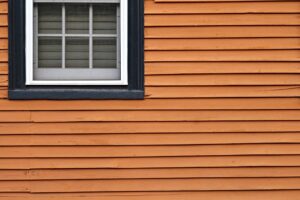
Transform Your Home with New Siding and See Your Property Value Soar
When it comes to home improvements, few projects offer as much return on investment as new siding. Not only does new siding enhance your home's curb appeal, but it also improves its energy efficiency, protects against the elements, and significantly boosts property value. This comprehensive guide will explore the numerous benefits of new siding and provide insights on how to choose the right materials and contractors for your project.
The Importance of Siding
Siding is a crucial component of your home's exterior. It not only serves as a protective barrier against the elements but also contributes significantly to the overall aesthetic appeal of your property. Choosing the right siding can make a dramatic difference in how your home looks and functions, ultimately affecting its market value and energy efficiency.
Enhancing Curb Appeal
First impressions matter, and the exterior of your home is the first thing potential buyers see. High-quality, attractive siding can transform the look of your home, making it more appealing and inviting. This aesthetic upgrade can be a game-changer when it comes to selling your property. Fresh, well-maintained siding gives the impression of a well-cared-for home, increasing its desirability.
Improving Energy Efficiency
Modern siding materials offer improved insulation properties, which can help maintain a comfortable temperature inside your home. This can lead to significant energy savings over time, as your heating and cooling systems won't have to work as hard to maintain a consistent indoor climate. Properly insulated siding can reduce energy bills, making your home more cost-effective and environmentally friendly.
Protecting Against the Elements
Siding acts as a shield, protecting your home from harsh weather conditions, including rain, wind, and snow. High-quality siding can prevent moisture from seeping into the walls, which can lead to mold and structural damage. By keeping your home dry and secure, new siding ensures long-term durability and safety. This protection is essential in maintaining the structural integrity of your home.
Increasing Property Value
One of the most compelling reasons to invest in new siding is the potential increase in property value. According to various real estate studies, homeowners can expect a significant return on investment from siding replacement. A well-maintained, visually appealing exterior can justify a higher asking price when it's time to sell. Prospective buyers are often willing to pay more for a home that requires less immediate maintenance.

Types of Siding Materials
Choosing the right siding material is crucial for achieving the desired look and functionality. Different materials offer various benefits and drawbacks, so it's essential to understand your options.
- Vinyl Siding: Vinyl siding is one of the most popular choices due to its affordability, durability, and low maintenance requirements. Available in a wide range of colors and styles, vinyl siding can mimic the appearance of wood without the associated upkeep. It's a cost-effective option that provides excellent durability and weather resistance.
- Fiber Cement Siding: Fiber cement siding is known for its durability and resistance to fire, insects, and rot. It can be made to look like wood, stone, or brick, providing a versatile option for homeowners. While more expensive than vinyl, fiber cement offers superior longevity and minimal maintenance. It's an excellent choice for those looking for a durable and aesthetically pleasing option.
- Wood Siding: Wood siding provides a classic, timeless look that many homeowners desire. It can be painted or stained in various colors, allowing for customization. However, wood siding requires regular maintenance to prevent rot, insect damage, and weathering. Despite the maintenance, many homeowners choose wood for its natural beauty and warmth.
- Metal Siding: Metal siding, including aluminum and steel, is highly durable and resistant to weather and pests. It's a popular choice for modern and industrial-style homes. Metal siding is low maintenance but can be prone to denting and scratching. It's a sleek and contemporary option that offers excellent protection and longevity.
- Stucco Siding: Stucco siding is common in Mediterranean and Spanish-style homes. It's made from a mixture of cement, sand, and lime, creating a durable and fire-resistant finish. Stucco can be textured and painted in various colors, but it requires professional installation and occasional maintenance. It's a unique and stylish option that offers great durability.
Choosing the Right Siding for Your Home
Selecting the appropriate siding material involves considering several factors to ensure you make the best decision for your home's needs and aesthetics.
Consider Your Climate
The climate in your area plays a significant role in determining the best siding material for your home. For instance, fiber cement siding is excellent for humid climates due to its resistance to moisture, while vinyl siding performs well in regions with mild weather conditions. It's essential to choose a material that can withstand the local weather patterns.
Evaluate Your Budget
Different siding materials come with varying price tags. Vinyl siding is generally the most budget-friendly option, while fiber cement and wood siding can be more expensive. Consider both the upfront costs and long-term maintenance expenses when making your decision. Balancing cost with quality and longevity is crucial for a good investment.
Think About Aesthetic Preferences
Your home's architectural style and your personal preferences will influence your siding choice. For a traditional look, wood or fiber cement siding might be ideal. For a more contemporary appearance, metal or vinyl siding could be the best fit. Ensure the siding complements your home's design and enhances its overall appearance.
Assess Maintenance Requirements
Consider how much time and effort you're willing to invest in maintaining your siding. Vinyl and metal siding require minimal upkeep, while wood siding needs regular painting or staining to stay in good condition. Choosing a low-maintenance option can save you time and money in the long run.

The Installation Process
Installing new siding is a significant project that requires careful planning and execution. Hiring a professional ensures the job is done correctly and efficiently.
Hiring a Professional Contractor
While some homeowners may consider installing siding themselves, hiring a professional contractor is often the best choice. Experienced contractors have the skills, tools, and knowledge to ensure the job is done correctly and efficiently. When selecting a contractor, check their credentials, ask for references, and get multiple quotes to compare. A professional installation guarantees quality and durability.
Preparing Your Home
Before installation begins, your home needs to be properly prepared. This includes removing old siding, repairing any damage to the underlying structure, and ensuring the surface is clean and smooth. Proper preparation is crucial for the new siding to adhere correctly and perform well. Addressing any structural issues beforehand ensures a successful installation.
Installation Steps
- Moisture Barrier Installation: A moisture barrier or house wrap is installed to protect your home from moisture infiltration. This step is vital for preventing mold and water damage.
- Starter Strip and Trim: The installation begins with a starter strip at the bottom of the wall. Trim pieces are then installed around windows, doors, and corners to ensure a clean, finished look.
- Siding Panels: The siding panels are installed from the bottom up, with each row overlapping the one below to create a watertight seal. Panels are secured using nails or screws, and special attention is paid to ensure they are level and properly aligned.
- Finishing Touches: Finally, the contractor will add finishing touches, such as caulking around windows and doors, to seal any gaps and improve energy efficiency. These final steps ensure a polished and durable exterior.

Maintaining Your New Siding
Proper maintenance is essential to keep your new siding looking its best and performing well over time. Regular upkeep ensures longevity and preserves the siding's appearance.
Regular Cleaning
To keep your siding looking its best, clean it regularly with a garden hose and a mild detergent. Avoid using a pressure washer, as it can damage certain types of siding. For tougher stains, a soft brush can be used to scrub the surface gently. Regular cleaning prevents buildup and keeps the siding looking fresh.
Inspect for Damage
Periodically inspect your siding for any signs of damage, such as cracks, warping, or loose panels. Promptly address any issues to prevent further damage and ensure the longevity of your siding. Early detection and repair of damage can save you from costly repairs later on.
Repainting or Staining
If you have wood siding, plan to repaint or stain it every few years to protect it from the elements and maintain its appearance. Fiber cement siding may also require occasional repainting, while vinyl and metal siding typically do not need to be painted. Regular maintenance preserves the siding's aesthetic and protective qualities.

The Financial Benefits of New Siding
Investing in new siding offers several financial advantages, making it a worthwhile investment for homeowners.
Increased Home Value
As mentioned earlier, new siding can significantly increase your home's market value. Potential buyers are more likely to be interested in a property with a well-maintained exterior, which can lead to quicker sales and higher offers. Enhanced curb appeal and reduced maintenance needs make your home more attractive to buyers.
Energy Savings
Improved energy efficiency can lead to lower utility bills, providing ongoing savings. High-quality siding materials with good insulation properties can reduce the amount of energy needed to heat and cool your home, making it more cost-effective to maintain. Energy savings contribute to a lower cost of living.
Reduced Maintenance Costs
Durable, low-maintenance siding materials can save you money on repairs and upkeep over time. Investing in high-quality siding now can prevent costly issues down the road, such as water damage or pest infestations. Reduced maintenance costs add to the overall savings.
Enhanced Warranty Options
Many siding manufacturers offer warranties on their products, providing peace of mind and financial protection. Be sure to understand the terms of the warranty and choose a reputable manufacturer to ensure your investment is safeguarded. Warranties protect your investment and offer assurance of quality.
Investing in new siding is a smart decision that offers numerous benefits, from enhancing curb appeal and protecting your home to increasing property value and saving on energy costs. By carefully selecting the right siding material, hiring a professional contractor, and maintaining your siding properly, you can enjoy a beautiful, durable exterior that adds significant value to your home. Whether you plan to sell in the near future or stay for years to come, new siding is a worthwhile investment that pays off in many ways.

Leave a Reply